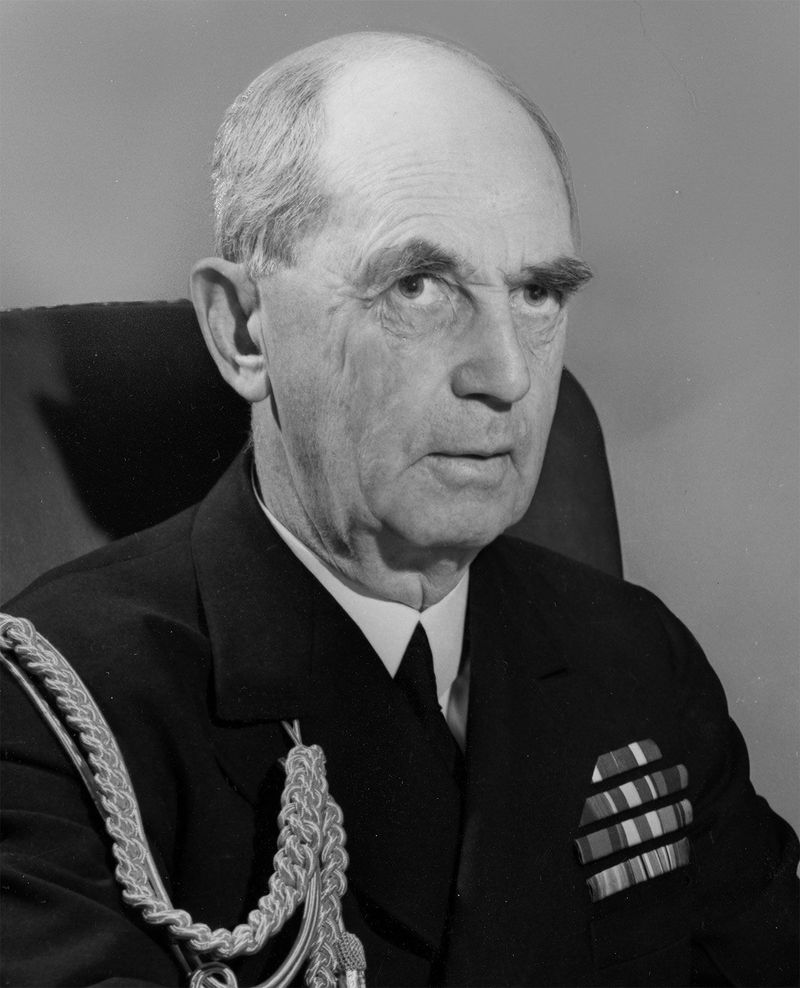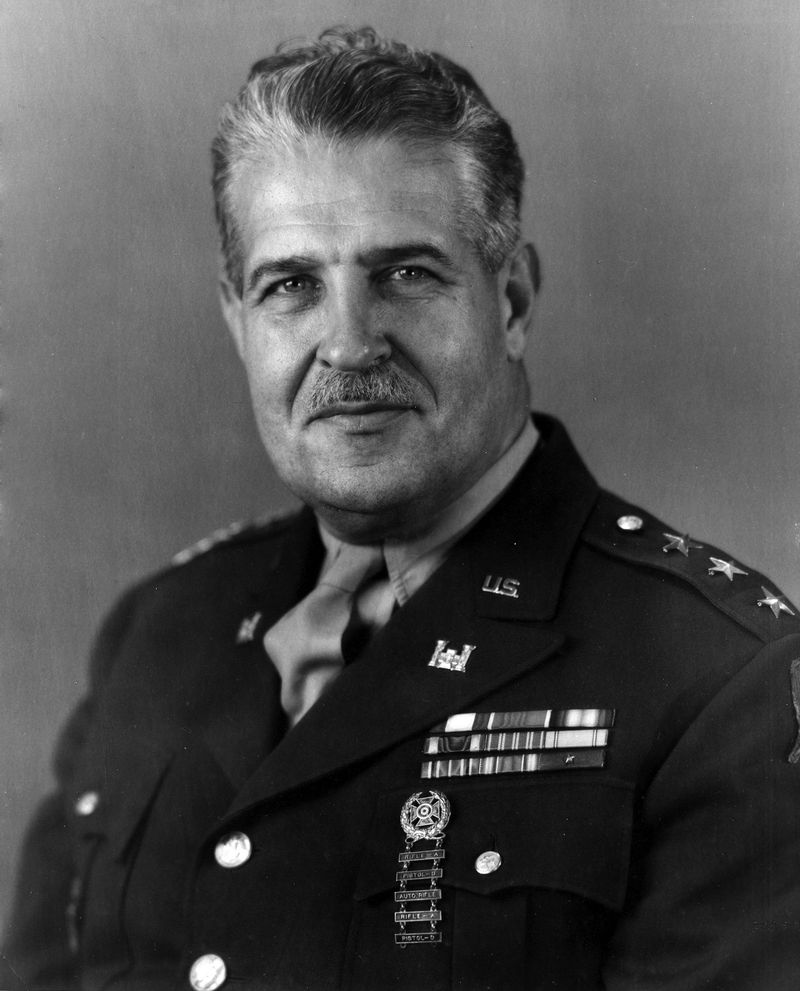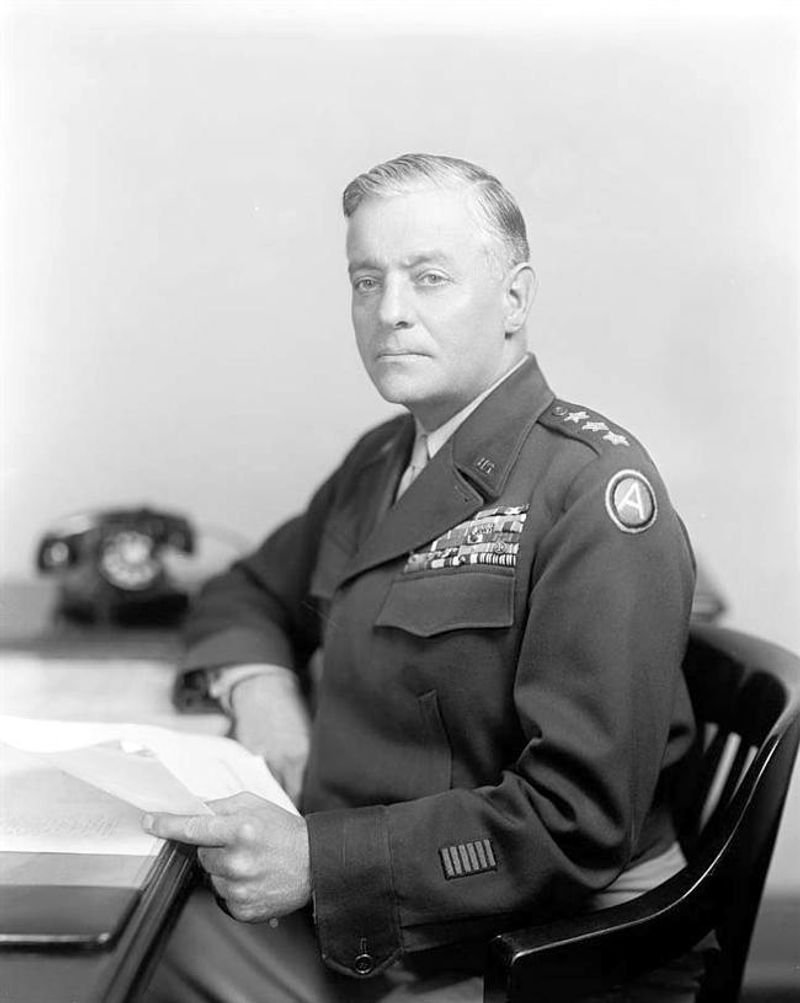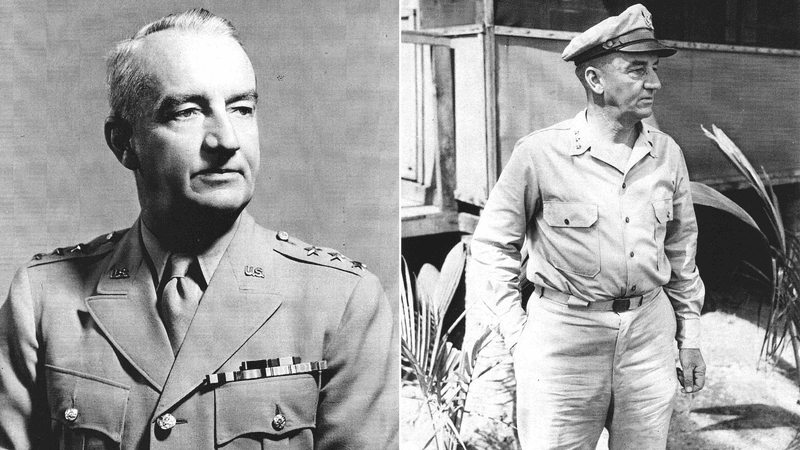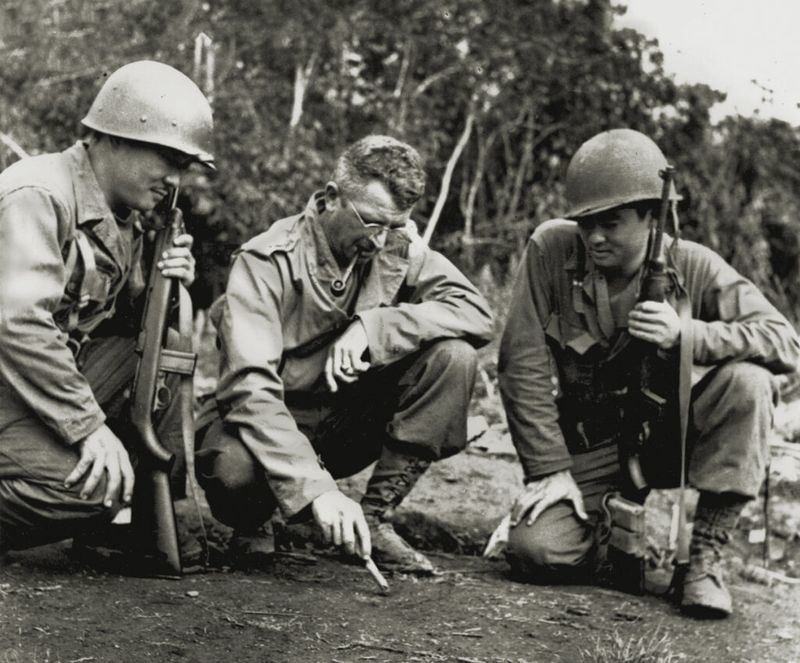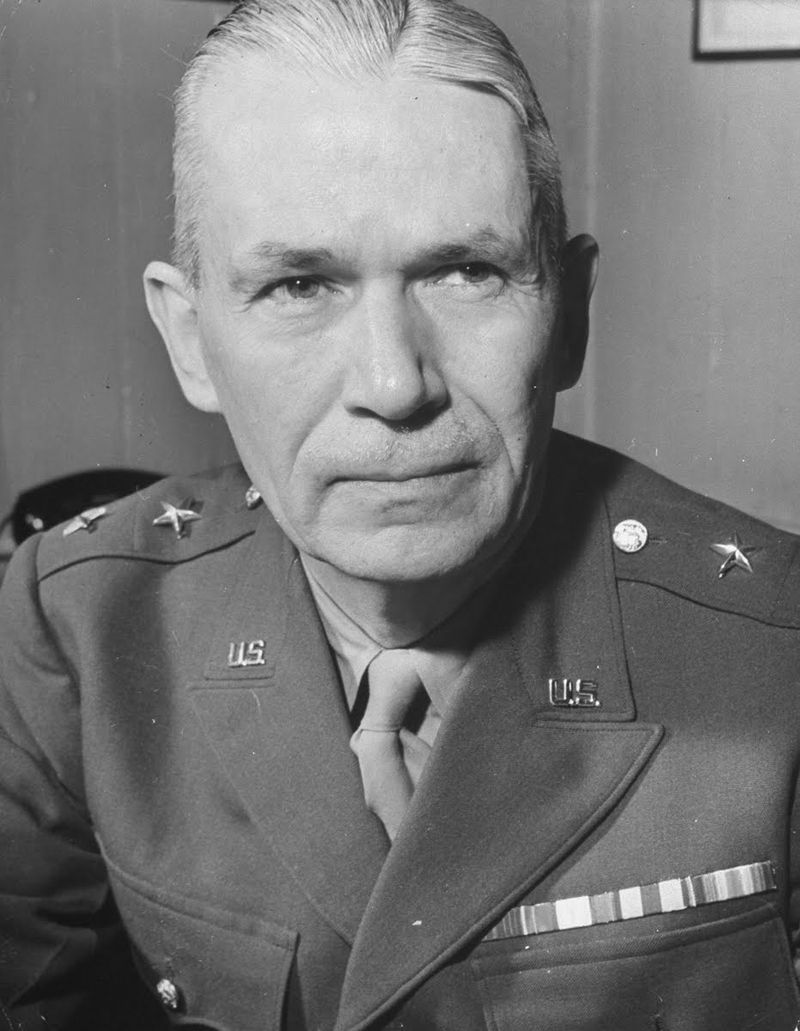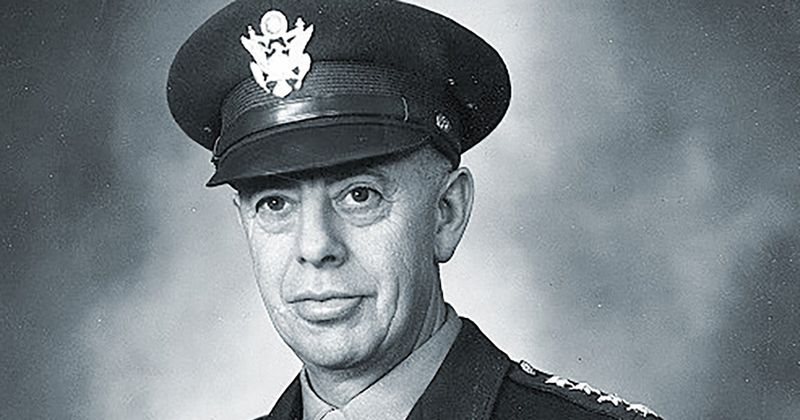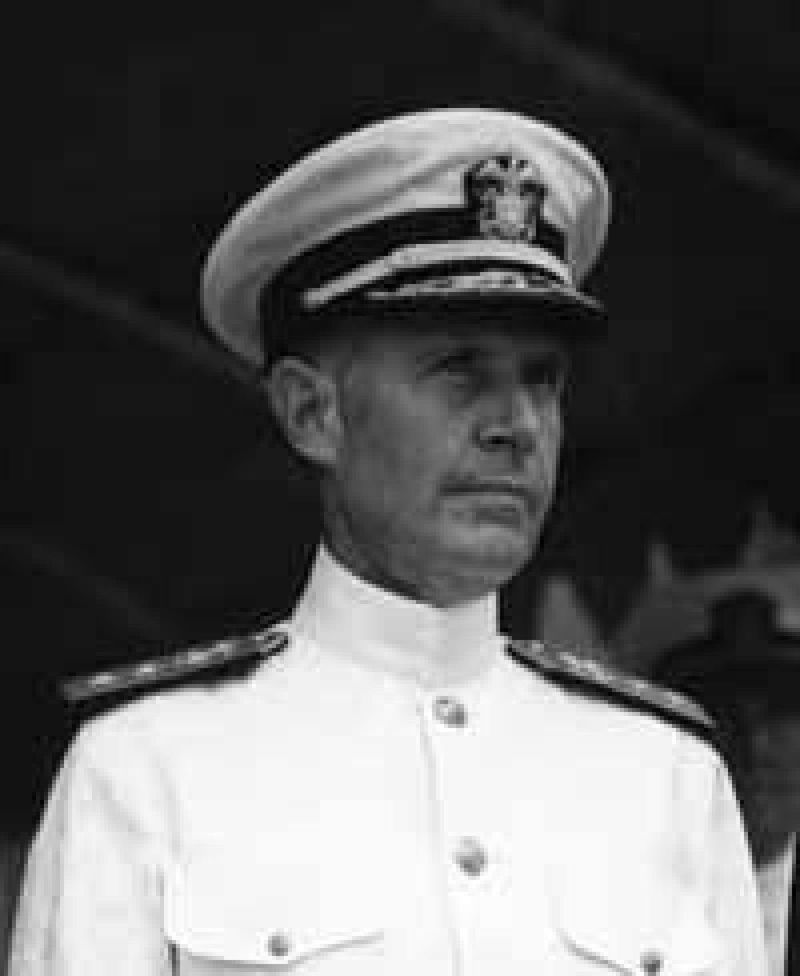History books often spotlight generals like Patton and Eisenhower, but many brilliant military minds who shaped World War II’s outcome remain in the shadows. These unsung heroes – strategists, codebreakers, logisticians, and field commanders – made critical contributions that directly led to Allied victory. Their innovations and leadership changed the course of history, yet their names have faded from public memory.
1. Fleet Admiral William D. Leahy: The President’s Shadow Strategist
Roosevelt’s right-hand man operated with such deliberate obscurity that historians dubbed him “the unseen wielder of power.” As Chief of Staff to the Commander-in-Chief, Leahy sat beside FDR at every major Allied conference, quietly shaping decisions that determined the war’s course. Unlike showier brass, the seasoned admiral cultivated anonymity while coordinating Army-Navy operations and alliance diplomacy. He guided crucial discussions on invasion timing and theater priorities with steady strategic judgment. Leahy’s memoir title, “I Was There,” perfectly captured his self-effacing approach – presenting himself as merely observing history rather than making it. This careful downplaying of his role succeeded so completely that many histories barely mention the man once considered “the second most powerful man in the world.”
2. Lieutenant General Leslie R. Groves: The Atomic Mastermind
Blunt and demanding, Groves transformed theoretical physics into history’s most devastating weapon. Selected to head the Manhattan Project in 1942, this Army engineer managed 125,000 workers, built secret cities from scratch, and spent billions in today’s dollars – all while maintaining unprecedented secrecy. His ruthless efficiency and administrative genius overcame seemingly impossible scientific and logistical challenges. When scientists wavered, Groves pushed relentlessly forward. After the war, Groves lost control of atomic energy to civilian authorities, and his abrasive personality won him few admirers. While the modest, intellectual Oppenheimer became celebrated as the bomb’s “father,” the tough general who actually delivered it on time faded into historical footnotes – despite being what historians call “the indispensable man” behind the war’s most decisive technological achievement.
3. Major General William J. Donovan: America’s First Spymaster
They called him “Wild Bill,” but Donovan’s most heroic exploits happened far from battlefield glory. This World War I Medal of Honor recipient built America’s first global intelligence network from nothing, creating the Office of Strategic Services (OSS) that would later evolve into the CIA. Donovan’s agents parachuted behind enemy lines, trained resistance fighters, gathered critical intelligence, and conducted sabotage operations that undermined Axis forces from within. His innovative vision for “unconventional warfare” saved countless Allied lives. The clandestine nature of intelligence work kept Donovan’s achievements classified for decades. While generals commanding armies became household names, the brilliant lawyer-turned-spymaster who fought shadow wars across Europe and Asia remained largely unknown to the American public – his battles won in back rooms and dark alleys rather than famous battlefields.
4. Commander Joseph J. Rochefort: The Codebreaker Who Saved Midway
Working feverishly in a basement facility nicknamed the “dungeon,” Rochefort led a brilliant team of codebreakers racing to crack Japan’s naval communications. Often seen in his signature red smoking jacket and carpet slippers during marathon decryption sessions, this eccentric intelligence officer accomplished the impossible. By May 1942, his Station HYPO team deciphered enough of the JN-25 code to determine that “AF” in Japanese signals meant Midway Island. Rochefort even devised an ingenious ruse to confirm his theory. Armed with this intelligence, Admiral Nimitz set the perfect trap at Midway, sinking four Japanese carriers in a battle that changed the Pacific War. Yet remarkably, bureaucratic rivals in Washington blocked Rochefort’s Distinguished Service Medal. His crucial contribution remained classified for decades, and he died without receiving the recognition he deserved.
5. General Lucian K. Truscott Jr.: The Soldiers’ General
Unlike his flamboyant peers, Truscott had no patience for showmanship. This no-nonsense commander created the legendary Army Rangers, then led troops from North Africa to Southern France with quiet, lethal efficiency. Famous for his “Truscott Trot” – a punishing 4-mile-per-hour march that toughened his 3rd Infantry Division into one of the war’s finest fighting units. When the Anzio beachhead stalled in early 1944, Truscott took command and engineered a brilliant breakout that captured Rome. A rare general who rose from division to corps to army command through pure merit, Truscott’s battlefield presence inspired fierce loyalty. He typically wore an ordinary helmet, carried a rifle, and stayed close to frontline troops. While Patton grabbed headlines, the unpretentious Truscott simply won battles – becoming what military historians consider “one of the most brilliant yet overlooked U.S. generals” of the war.
6. General Robert L. Eichelberger: MacArthur’s Problem Solver
“Take Buna, or don’t come back alive.” With these harsh words, MacArthur dispatched Eichelberger to salvage a failing New Guinea campaign in 1942. Arriving at the front, he found demoralized troops, jungle diseases rampant, and a formidable Japanese fortress. Eichelberger personally led reconnaissance patrols, reorganized units, and inspired his men to victory. His subsequent campaign through New Guinea featured brilliant tactical maneuvers at Hollandia and Biak that outflanked Japanese strongholds. As Eighth Army commander in 1945, he conducted 35 amphibious landings in just five weeks to liberate the southern Philippines. Despite these remarkable achievements, Eichelberger remained perpetually in MacArthur’s shadow. The press attributed his victories to his famous boss, while the modest general never sought personal glory – creating a historical oversight that persists today.
7. Brigadier General Frank D. Merrill: Jungle Warfare Pioneer
Three thousand volunteers, 700 miles of mountainous jungle, and a mission many deemed impossible. Merrill led his famous “Marauders” deep behind Japanese lines in Burma, fighting disease and starvation alongside the enemy. After months of grueling combat, his men achieved their crowning victory in May 1944. Following an exhausting flank march over the Kumon Mountains, they surprised Japanese forces and captured Myitkyina airfield – the first major Japanese stronghold taken on mainland Asia. This victory secured a vital supply route to China, helping turn the tide in a theater often called the “forgotten war.” Merrill himself suffered multiple heart attacks during the campaign but refused evacuation. His unit received a Presidential Unit Citation, but Merrill’s extraordinary leadership in one of the war’s most punishing environments remains little known to the general public.
8. Lieutenant General Brehon B. Somervell: Supply Chain Mastermind
Wars are won by logistics as much as tactics, and Somervell was America’s logistics wizard. As commander of Army Service Forces, he orchestrated the mind-boggling task of supplying over 8 million troops across global battlefronts. When D-Day forces outran their supply lines, Somervell created the Red Ball Express – a round-the-clock truck convoy system that kept Patton’s tanks fueled and firing. His organization built the Pentagon in record time, then managed the vast industrial machine that made America the “Arsenal of Democracy.” Demanding and politically shrewd, Somervell ensured that American soldiers never lacked ammunition, fuel, food, or medicine. Yet his behind-the-scenes role meant few civilians knew his name. One military historian aptly noted that war histories emphasize dramatic battles “at the expense of logistics” – leaving the brilliant organizer who made those victories possible forgotten by all but serious students of military science.
9. General George C. Kenney: MacArthur’s Aerial Innovator
Faced with obsolete planes and limited resources, Kenney transformed Allied air power in the Southwest Pacific through sheer ingenuity. His mechanics modified B-25 bombers with extra forward-firing guns, creating devastating ground-attack aircraft nicknamed “commerce destroyers.” Kenney pioneered “skip bombing” – a technique where planes flew dangerously low to bounce bombs into enemy ships like skipping stones. This tactic proved devastatingly effective in the 1943 Battle of the Bismarck Sea, where his aircraft sank an entire Japanese convoy. As MacArthur’s air commander, Kenney provided crucial air support for island-hopping campaigns. Despite his remarkable tactical innovations and battlefield successes, Kenney’s achievements were often credited to MacArthur in press reports. After the war, he was briefly the first commander of Strategic Air Command before being reassigned, further diminishing his historical footprint compared to more famous air leaders.
10. Admiral Raymond A. Spruance: The Calculating Naval Genius
“The Quiet Warrior” commanded with such understated brilliance that even his greatest victories couldn’t make him famous. At the pivotal Battle of Midway in 1942, Spruance made the crucial decision to launch aircraft at precisely the right moment, resulting in the sinking of four Japanese carriers – a victory that changed the course of the Pacific War. Later, at the Battle of the Philippine Sea in 1944, his careful positioning and tactical decisions led to the “Great Marianas Turkey Shoot” that decimated Japan’s naval air power. Throughout, Spruance prioritized mission success over personal glory. When historians later called him the “Victor of Midway,” Spruance objected, asking simply to be credited as having “commanded a carrier task force” there. His modest demeanor and aversion to publicity ensured that more colorful admirals like “Bull” Halsey captured public attention, while the brilliant tactician who won two of the war’s most decisive naval battles faded from popular memory.
11. General Albert C. Wedemeyer: The Victory Program Architect
Before Pearl Harbor, Lieutenant Colonel Wedemeyer quietly crafted America’s blueprint for global war. His top-secret “Victory Program” outlined exactly how many divisions and supplies would be needed to defeat the Axis – a remarkably accurate prediction that guided America’s military expansion. As the principal architect of early D-Day planning, Wedemeyer laid crucial groundwork for the Normandy invasion that would eventually liberate Europe. Churchill’s political maneuvering later pushed him to the China-Burma-India theater, away from the European spotlight. Denied high-profile command opportunities, Wedemeyer’s visionary contributions remained largely uncredited in popular histories, his strategic genius overshadowed by more famous generals who executed the plans he meticulously designed.

